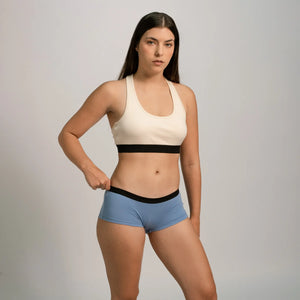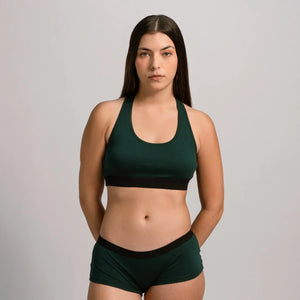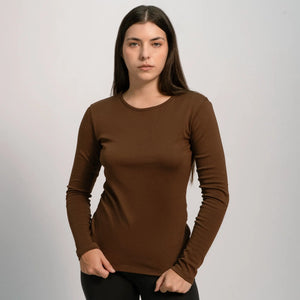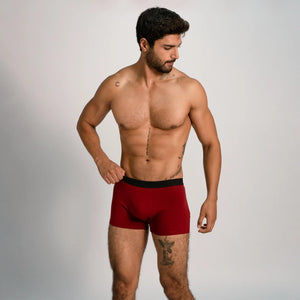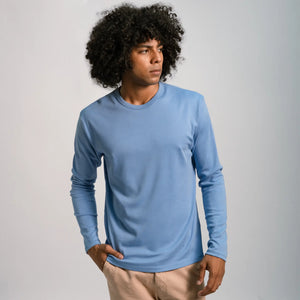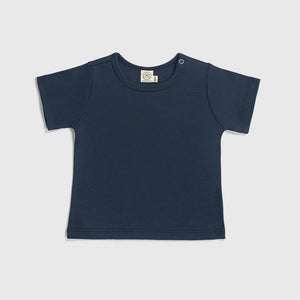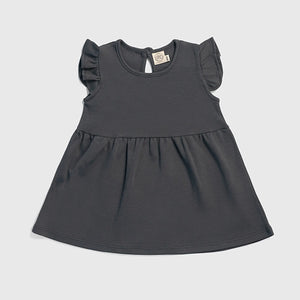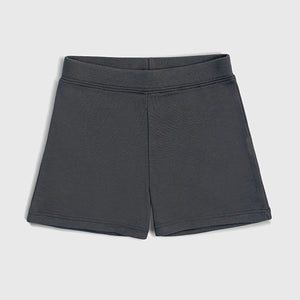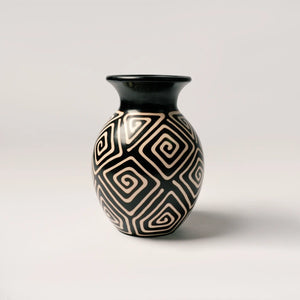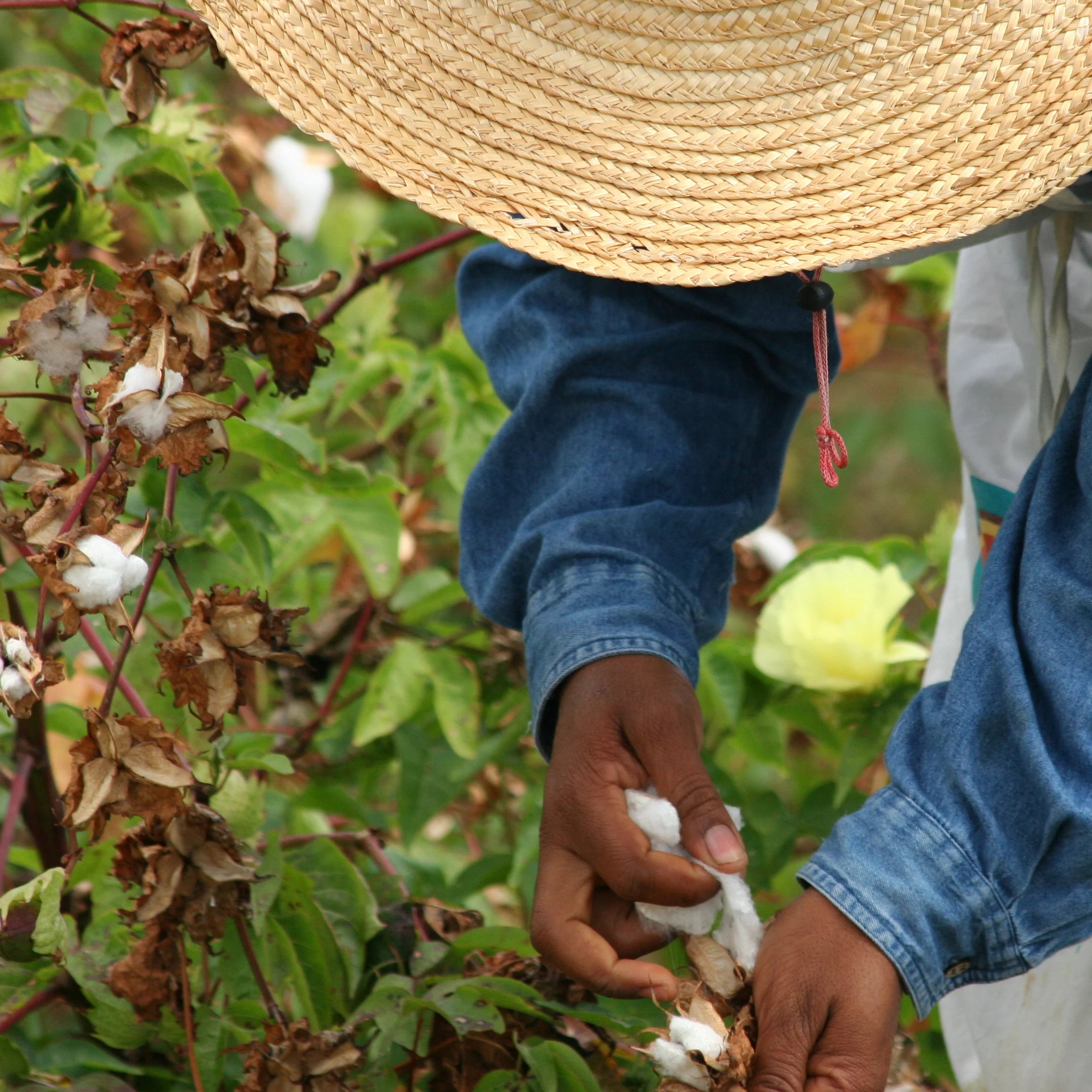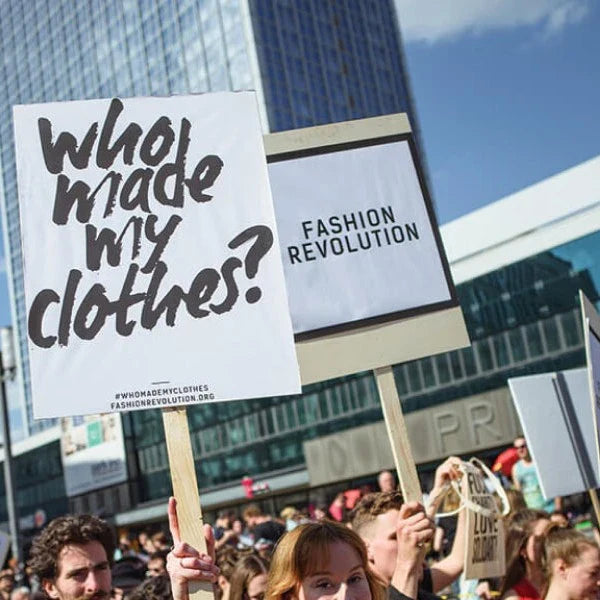Community Clothing:
Redefining Fashion for a Sustainable Future
.
AYA | JANUARY 14, 2025
READING TIME: 7 minutes
Today, the fashion industry faces challenges not only from the economic and environmental impacts of fast fashion but also from growing ethical debates that influence consumer purchasing behaviors. As these ethical concerns gain prominence, the concept of community clothing has evolved into something far more than just a trend. Community clothing is now a multifaceted approach to fashion, with each initiative having its own unique impact.
In this article, we explore the diverse landscape of community clothing, with a special focus on those that advocate for sustainability and drive positive change.
Brand Communities vs. Community Clothing: Unpacking the Connection
A concept closely related to community clothing is brand communities, often mistaken for the same thing. The collective value both terms bring to the table lies in the creation of implicit, discursive, and emotional value for consumers [1]. This overlap can create some confusion. Brand communities aim to strengthen the consumer-brand relationship while fostering a sense of loyalty and understanding between consumers and the community [2,3].
This creates a shared identity and a deeper connection with the brand's vision, turning consumers into "co-creators" of the products [3] or, at the very least, making them feel that their voices and desires influence the brand’s projects.
So, what exactly is community clothing? This term, more commonly used in marketing, differs from the more academically-focused concept of brand community. It refers to clothing brands that adopt ethical fashion, social justice, and sustainability principles while seeking to empower and strengthen local or specific communities.
In fact, brand communities can incorporate the values of community clothing, meaning that a brand community may help create a community clothing movement. After all, members of a brand community are not only united by their love for the brand's products, but also by trust in the way the brand operates, particularly when the brand's social or community-driven mission strengthens their connection [2,4].

What Is a Community for Brands: Interaction or Belonging?
Decades ago, brands built communities centered around geographical spaces. But today, the world has dramatically shifted. To make an impact on consumers' subconscious, generate emotions, and produce tangible changes, brands cannot afford to miss any opportunity to market their products. This is where the concept of "community" has evolved.
In 2023, Facebook generated approximately $132 billion from advertisements alone, targeting over 3.43 billion active users [5]. This was the most common method for attracting new customers, relying heavily on creativity since a single swipe could mean losing a potential consumer. But as we all know, ads are no longer the only marketing strategy used on social media—and certainly not the most effective. The transient nature of an ad, amidst the vast flood of content on social media, fails to create lasting impact.
This is why “communities” began to take root on web platforms. The creation of communities has become a central part of marketing strategies, allowing users to feel closer to brands by connecting with others who share their interests or by learning more about the brand’s processes. These communities strengthen the relationship between "self" and "product" fostering a sense of ownership [3].
Imagine the economic and social power these platforms have generated in recent years. Platforms like Discord, Instagram, X, TikTok, Slack, and many others have transformed the direct consumer-brand interaction into a dynamic ecosystem of feedback, support and identity [2,7], allowing community clothing initiatives to rise in prominence.

Understanding the Motivation Behind Community Clothing
For many brands, a traditional approach has been to connect with the resources of a community and use traditional skills to work with those resources [8]. Who better to fill those roles than members of the community itself? This approach fosters identity, making it a symbol that transcends borders and serves as a means of self-expression and collective action in support of shared ideals [9,10].
Inclusion and adaptation are key elements for community clothing initiatives, allowing diverse groups within a community to feel heard and respected [11]. The satisfaction of being part of a community where shared values and interests align around external challenges, while maintaining harmony, is a powerful motivator [11].
Sustainability at the Heart of Community Clothing: A Closer Look
Among the various community clothing initiatives, those prioritizing sustainability are gaining significant traction. These initiatives go beyond simply creating eco-friendly garments; they educate, empower, and inspire consumers to make more conscious decisions [12]. Here’s how they make a difference:
- Material Selection: They prioritize sustainable materials such as organic cotton, recycled fibers, or innovative plant-based alternatives, minimizing the environmental impact of production
- Production Practices: These brands adopt ethical, eco-conscious production methods that reduce water and energy consumption, minimize waste, and ensure fair working conditions.
- Social awareness and environmental education: They actively educate consumers about the environmental and social impacts of fashion, empowering them to make informed purchasing decisions [12,13].
- Community Engagement: These brands foster a sense of community around sustainable practices, encouraging consumers to participate in clothing swaps, repair workshops, or recycling initiatives [13].
- Transparency and Traceability: They are transparent about their supply chains and production processes, allowing consumers to trace the journey of their garments from farm to finished product.
These actions have far-reaching impacts:
- Reduced Environmental Footprint: By promoting sustainable materials and production practices, they help reduce the fashion industry's environmental impact, mitigating pollution and conserving resources
- Empowered Consumers: These initiatives empower consumers to become conscious buyers, making informed choices about the clothes they purchase and the brands they support.
- Shift in Values: They promote a shift in consumer values, encouraging people to prioritize quality over quantity, durability over disposability, and ethical production over fast fashion trends.
- Sense of Belonging and Development: They foster a sense of belonging around shared sustainability values, connecting people and building a collective movement for change.
- Economic Development: They often support local artisans and small businesses, contributing to economic growth and preserving traditional skills.
Changing Demographics and Preferences
The pandemic also highlighted shifting demographics in the fashion market. Younger consumers, particularly Gen Z and Millennials, became increasingly influential in shaping purchasing trends. Research from the Institute for Sustainable Fashion indicates that younger generations are more likely to support sustainable brands, with 83% of Millennials stating they prefer to buy from companies that share their values [7,8].
Moreover, with the rise of remote work, many consumers reported a preference for comfort over style. A study published in the Journal of Fashion Marketing and Management noted that comfort became the primary driver of clothing purchases for many consumers, with 65% prioritizing comfort in their buying decisions [9]. This trend is likely to persist as remote work becomes a more permanent aspect of many industries.

Changing Demographics and Preferences
The pandemic also highlighted shifting demographics in the fashion market. Younger consumers, particularly Gen Z and Millennials, became increasingly influential in shaping purchasing trends. Research from the Institute for Sustainable Fashion indicates that younger generations are more likely to support sustainable brands, with 83% of Millennials stating they prefer to buy from companies that share their values [7,8].
Moreover, with the rise of remote work, many consumers reported a preference for comfort over style. A study published in the Journal of Fashion Marketing and Management noted that comfort became the primary driver of clothing purchases for many consumers, with 65% prioritizing comfort in their buying decisions [9]. This trend is likely to persist as remote work becomes a more permanent aspect of many industries.

Changing Demographics and Preferences
The pandemic also highlighted shifting demographics in the fashion market. Younger consumers, particularly Gen Z and Millennials, became increasingly influential in shaping purchasing trends. Research from the Institute for Sustainable Fashion indicates that younger generations are more likely to support sustainable brands, with 83% of Millennials stating they prefer to buy from companies that share their values [7,8].
Moreover, with the rise of remote work, many consumers reported a preference for comfort over style. A study published in the Journal of Fashion Marketing and Management noted that comfort became the primary driver of clothing purchases for many consumers, with 65% prioritizing comfort in their buying decisions [9]. This trend is likely to persist as remote work becomes a more permanent aspect of many industries.


The Future of Fashion: Educating for a Sustainable Tomorrow
The future of fashion lies in our ability to rethink the way we produce, consume, and engage with clothing. Community clothing, especially those with a strong focus on sustainability, is leading the charge toward a more responsible and informed industry. But this shift doesn’t just rely on brands—it’s about educating the population to make better, more sustainable choices.
As consumers, you have the power to shape the future of fashion, and we as a brand, from AYA, provide you with all the tools that are at our disposal.
By embracing the principles of community clothing and sustainability, we can collectively create a world where fashion not only serves our personal style, but the planet and future generations. We at AYA will continue to work towards sustainable change through education, awareness and taking environmentally conscious actions. Together with our community, we can pave the way towards a future in which fashion is no longer part of the problem, but part of the solution.
Glossarykeywords
Advertisement:
A notice or announcement in a public medium, whether physical or digital, that aims to promote a product, service or event.
Co-creator:
We can talk about co-creator for each of the people who, together, have created something.
Consumer-Brand Relationship:
It is the psychological connection that is generated between the brand and the consumer. This connection is formed by the way in which the consumer thinks, feels and interacts with a product or a company.
Purchasing Behavior:
They are all the attitudes, preferences, intentions and decisions that govern a consumer throughout the process of buying a product or service.
Subconscious Mind of a Consumer:
This is the part of the mind where most purchasing decisions are made. In this part, actions are governed by emotions and sensations rather than logic.
Sustainability:
"Meeting the needs of the present without compromising the ability of future generations to meet their own needs" (ONU, 1987).
Glossarykeywords
Advertisement:
A notice or announcement in a public medium, whether physical or digital, that aims to promote a product, service or event.
Co-creator:
We can talk about co-creator for each of the people who, together, have created something.
Consumer-Brand Relationship:
It is the psychological connection that is generated between the brand and the consumer. This connection is formed by the way in which the consumer thinks, feels and interacts with a product or a company.
Purchasing Behavior:
They are all the attitudes, preferences, intentions and decisions that govern a consumer throughout the process of buying a product or service.
Subconscious Mind of a Consumer:
This is the part of the mind where most purchasing decisions are made. In this part, actions are governed by emotions and sensations rather than logic.
Sustainability:
"Meeting the needs of the present without compromising the ability of future generations to meet their own needs" (ONU, 1987).
References:
[1] Schau, H. J., Muñiz, Jr, A. M., & Arnould, E. J. How brand community practices create value. Journal of Marketing. 2009;73(5):30-51. https://doi.org/10.1509/jmkg.73.5.30
[2] Marzocchi, G., Morandin, G., & Bergami, M. Brand communities: loyal to the community or the brand? European Journal of Marketing. 2013;47(1-2):241-63. http://dx.doi.org/10.1108/03090561311285475
[3] Gong, T. Customer Brand Engagement Behavior in Online Brand Communities. Journal of Services Marketing. 2018;32(1):24-34. http://dx.doi.org/10.1108/JSM-08-2016-0293
[4] Fletcher, K. Sustainable Fashion and Textiles: Design Journeys. 2nd ed. London: Earthscan; 2014.
[5] Statista Research Department. Facebook's annual revenue from 2009 to 2023, by segment [Internet]. Statista; 2024 [cited 2025 Jan 13]. Available from: https://es.statista.com/estadisticas/635645/facebook-ingresos-anuales-por-segmento/
[6] Rehman, F. u., & Al-Ghazali, B. M. Evaluating the Influence of Social Advertising, Individual Factors, and Brand Image on the Buying Behavior toward Fashion Clothing Brands. SAGE Open. 2022;12(1):2158244022108885. https://doi.org/10.1177/21582440221088858
[7] Nguyen, T. How brands are building community, from book clubs to fitness studios [Internet]. Vox; 2023 Jul 11 [cited 2025 Jan 13]. Available from: https://www.vox.com/the-goods/23186958/brand-building-community
[8] Fletcher, K., & Grose, L. Fashion and Sustainability: Design for Change. 2nd ed. London: Bloomsbury Visual Arts; 2019.
[9] Bick, R., Halsey, E., & Ekenga, C. The Global Impact of Fast Fashion: An Analysis of the Environmental, Social, and Economic Effects of the Fashion Industry. Sustainability. 2018;10(5):1-20.
[10] Cohen, S. Fashion as Communication. London: Routledge; 2012.
[11] Forbes Communications Council. The power of community: How fashion brands are building loyalty among Gen Z [Internet]. Forbes; 2024 Oct 1 [cited 2025 Jan 13]. Available from: https://www.forbes.com/councils/forbescommunicationscouncil/2024/10/01/the-power-of-community-how-fashion-brands-are-building-loyalty-among-gen-z/
[12] Fletcher K, Tham M. Fashion, Community, and Sustainability: New Models for the Circular Economy. Fashion Theory. 2019.
[13] International Trade Centre (ITC). Ethical Fashion Initiative Annual Report. 2017.
You don't have to put all the weight on your shoulders. Every action counts. At AYA, we fight microplastic pollution by making a 100% plastic-free catalog.
Visit Our Shop →You May Also Like to Read...
Trump’s Plastic Rollback: How It Threatened Sustainable Fashion Growth
Explore how Trump’s plastic policies impacted sustainable fashion’s growth and consumer demand. Also, learn how to navigate these regulatory challenges.
Fair Trade World Day: Why Ethical Fashion Can’t Wait
This Fair Trade World Day, explore why ethical fashion is urgent. Discover the hidden cost of fast fashion—and how fair trade offers a way forward.
Exploring the Environmental Impact of Conservation Efforts
Explore how environmental art and activism, from land installations to protests, often leave unintended ecological scars where conservation efforts clash with sustainability.
Fashion Revolution Day 2025: Mending Sustainable Fashion
Fashion Revolution Week 2025: Learn how transparency transformed luxury brands like Gucci. Act now for garment workers’ rights & sustainable innovation.
